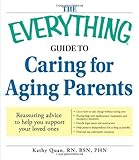DIAGNOSIS SPECIFIC DOCUMENTATION OF HOMEBOUND STATUS
©2009-12 Kathy Quan RN BSN ALL RIGHTS RESERVED
Relating the homebound status to a diagnoses is one approach to utilizing documentation to support the need for home care.
When the homebound status and skilled need are both tied to a diagnosis, your documentation should provide adequate justification of meeting the criteria for homecare and for reimbursement.
Your OASIS data must also serve to substantiate the homebound status, especially in the functional limitations and/or ADL/IADL categories
The following phrases can be included in your documentation to support the homebound status:
HIV/AIDS
Medical restriction due to Immunosuppression
On IV antibiotic therapy for complications (i.e. CMV retinitis)
Requires continuous oxygen therapy
Impaired mental status affects decision making skills
Terminal status
Severely weakened condition due to impaired nutrition/hydration status
Requires 24 hour care and supervision
Pain impairs mobility; pain medication impairs decision making ability
CARDIOVASCULAR (i.e. MI, CHF, Hypertension, Unstable Angina, PVD, CVA/TIA)
Cardiac restrictions due to angina
Experiences angina even at rest
Experiences angina with minimal activity
Poor endurance, experiences SOB with minimal activity
Experiences SOB at rest
Able to ambulate only short distances (20 ft. or less) before experiencing SOB, angina
Oxygen dependency (specify PRN or continuous)
Edema in lower extremities limits ambulation
Medical restriction to elevate LES due to edema
Medical restrictions due to HTN-- BRPs only
Orthostatic hypotension - symptomatic - at risk for falls
Medical restriction to elevate LE due to PVD
Activity or weight bearing status restrictions due to PVD
Cardiac restrictions post CABG (X # vessels)
Post op pain and weakness (S/P CABG X __)
Right or Left Hemi paresis/paralysis due to CVA
Requires assist with most ADLs/IADLs
PULMONARY (i.e. Pneumonia, Bronchitis, COPD, Asthma, Tracheostomy care)
SOB at rest
Respiratory distress with minimal activity or speaking
Oxygen dependency (l/min prn or cont.)
Minimal activity induces asthmatic attack
Profound weakness due to hospital stay due to pneumonia
At risk for further respiratory infection (esp. if in "flu season")
Present weather conditions (high heat/humidity) exacerbate condition; requires air conditioned environment
for optimum respiratory status
Medical restrictions due to risk of post op infection
Copious secretions- at risk for airway obstruction frequent suctioning of new tracheostomy
CANCER (general considerations)
Pain (include site(s) and intensity impedes mobility. (Pain medication impairs safety)
Immunosuppression due to: chemotherapy, radiation, bone marrow transplant
Profound weakness due to side effects of chemo/radiation (frequent N/V, diarrhea)
With bone mets… at risk for pathological fractures
Terminal status/ impending death
With brain mets… impaired decision making capabilities
MUSCULOSKELETAL (Fractures, Joint Replacement, Arthritis, Amputations)
Medical restrictions on activity due to (partial/non) weight bearing status
Unsteady gait, poor balance S/P surgery
Unable to navigate uneven terrain, stairs (specify #) into/out of home-- no elevators or ramps available
Activity limited due to brace, cast, traction etc.
Pain with minimal activity
Activity restricted due to pain
S/P Right/Left/Bilat AKA/BKA awaiting prosthesis
Unable to use prosthesis due to: stump wound, size change, malfunction etc.
New pathological fracture (osteoporosis) with severe pain and limited mobility
RENAL/GU (Foley catheters, ARF, CRF, ESRD, Kidney transplant)
For Foley Catheter also see any underlying reasons such as Alzheimer's, CVA,
MS, para/quadraplegia, etc. (Foley alone does not support homebound status.)
Fatigue from anemia due to Acute Renal Failure, CRF, ESRD; with or without dialysis
Medically restricted to home to reduce exposure to infection
Significant lower extremity edema requires activity restriction and elevation of LES
Remember: homecare nurses DO NOT deal with dialysis issues!
GI (Altered feeding routes: TPN, NG, G-Tube; Ostomy, Constipation/Fecal Impaction)
Requires continuous feedings with non ambulatory pump
At risk for infection due to immunosuppression
S/P major surgery with medical restrictions
Pain and weakness due to recent major surgery
Pain and decreased mobility due to severe constipation/ fecal impaction
New ostomy (specify)- patient fearful of lack of control of odors, leakage, noises
NEURO (Seizures, Dementia, Alzheimer's, Parkinson's)
Requires 24 hour care due to fluctuating mental status, confusion, combative state
Unable to leave home unattended due to confusion
Deteriorating mental status makes it unsafe for patient to leave home unsupervised
Decision making capabilities are impaired
Unsteady gait, dizziness, syncope
At risk for falls due to shuffling gait
Impaired neurological status
Frequent seizure activity; requires supervision/assist of another
INTEGUMENTARY (Decubs, Venous/StasisUlcers, Wounds)
Medical restrictions, site to be elevated
Open wound with large amount of drainage
Large open wound (size); at risk for infection
Medical restriction -- non weight bearing status
At risk for falls, further injury
Movement restricted due to pain
ENDOCRINE (Diabetes)
Unstable blood sugar levels, experiences severe fluctuations
Blindness
BKA/AKA
Requires assist or assistive device due to neuropathy/ paresthesia in LES
Activity restrictions due to diminished sensation/circulation in LES. Patient vulnerable to blisters or other breakdown on feet (esp. with history of) when ambulating >100 feet
Severe SOBOE due to obesity




